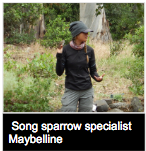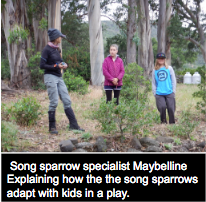

There are 3 species of birds that are native to the Santa Cruz island, one of which is the island scrub jay. The island scrub jay is threatened because of their susceptibility to the West Nile virus which is carried by mosquito species. Santa Cruz Island temperatures are too low to normally have the mosquitoes but due to global warming the mosquitoes can live there and give the birds the virus. Some people are trying to find vaccines for the birds, but the one they found was too expensive to use on all the birds.
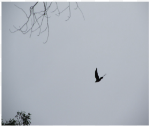
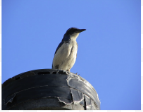
Island scrub jay
Scientific name
Aphelocoma Insularis
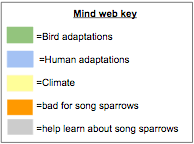

Above this text there is a mind web. In a mind web there is a main word or a category that all the other words or categories connect to with a line.

How you know it is a mind web is that the name is in the middle and everything has to connect to it or connect to something that connects to the middle. Song sparrow: when we were at the Channel Islands, there was a song sparrow specialist. Her name was Maybelline. She told us that she worked in the song sparrow’s mating/nesting season. Why she did this is because she would catch the song sparrow in a net when she would lure them with bird calls. Then she would tag the bird. We also learned that the song sparrows that she studies are the males.
We were in the creek studying a dead scrub jay. When I looked up in a tree there was a nest. In the nest I saw a bird. Once she saw us, she flew away into a tree. I looked closer and saw two baby birds sitting in the nest. We started to take pictures of the nest and climb trees to get a better look at it. Some people thought that it wasn’t a bird nest because there were clumps of the same material that the bird used for it’s nest on the tree. One reason that we think that the bird used the tree is that the nest would be camouflaged from predators like the island foxes. We noticed that the mother bird was constantly moving from tree to tree. At camp we tried to make a nest just like the one we saw in the creek. We found it very hard to make a nest and thought how long it would take a bird to make its nest. The bird species that was in the nest was identified as the Black Headed Grossbeak.
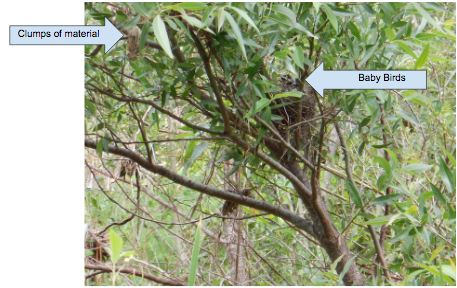
During our adventure on Santa Cruz Island we noticed a dead juvenile island scrub jay laying there in the creek. My group and I decided to investigate how the bird died. We put on our gloves and picked up the scrub jay. We noticed that jay died of a broken neck. Earlier that day I was introduced to a scrub jay specialist named Rebeca. She informed us that other birds on the island liked to kill other birds for fun. Rebeca told us that bigger birds would grab their necks with their talons then the big bird would snap their neck.

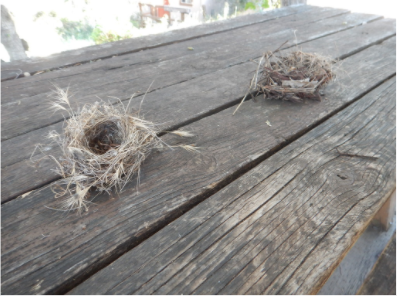
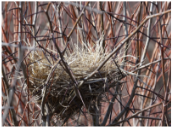
We went to a scrub jay preserve and learned that people at the preserve use a special sound to attract the island scrub jay for peanuts. We also learned that the island scrub jays bury acorns for winter, if their territory has oak trees. But some territories do not have oak trees. Instead they have pine trees which have pine nuts. So they bury pine nuts for winter instead of acorns. I also learned that island scrub jays are very territorial. If another scrub jay comes into their territory, they would pull out all its feathers. They also have a mate for life to share their territory with. They never leave their mate unless one of them dies. In that case they go and find a new mate.

On Santa Cruz Island, we spotted a barn swallow's nest that they were building on a beam in a barn. It was built with mud, small twigs, and grass. Barn swallows are a unique type of bird that build their nests on sides of mountains and buildings. Barn swallows are insectivores which means they mainly eat flying insects such as moths, dragonflies, and beetles. Insects are 99% of their diet. They lay 3-7 eggs at a time. The hatching survival rate is 90% and the fledgling survival rate is 70%.
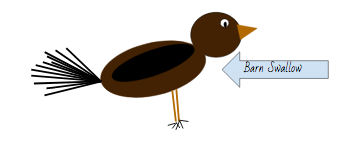
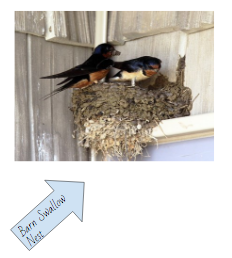
When we were at the Santa Cruz there was a song sparrow specialist. Her name was Maybelline. She told us that she worked in the song sparrow’s mating/nesting season. How she did this is by catching the song sparrow in a net, when she would lure them with bird calls. Then she would tag the bird. We also learned that the song sparrow that she studies are the males.
